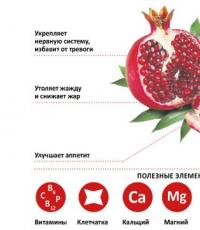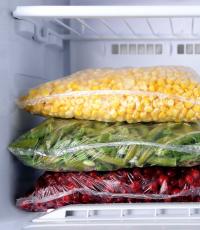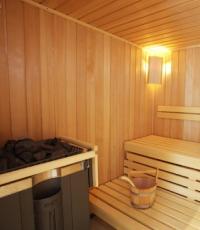Extract air purifier for the kitchen. What to choose: a full range hood or an air purifier in the kitchen? Which is better: an air cleaner or a conventional hood
Reading 12 min. Published on 01/18/2020
Instrument classification
Air purifiers can vary in several ways. According to the principle of operation, the technique is divided into:
- Devices with an exhaust type of operation;
- Recirculation devices;
- Air cleaners of the mixed action.
In the first case, the devices collect air impurities and take them out of the room through the ventilation shaft.
The second option involves the processing of polluted air inside the air cleaner. In this case, impurities remain on the surface of the filters, and the purified air is returned to the kitchen.
Mixed action devices are equipped with two filtration mechanisms.
By type of installation, air cleaners are divided into:
- Dome. They are fixed above the stove and act by venting air into the exhaust channels.
- Suspended. They are also installed above the hob and operate according to the recirculation rule.
- Embedded. They are characterized by a mixed version of work and are designed for installation in kitchen elements.
- Mobile. Operates only in air recycling mode.
If we talk about the shape of the devices, then they produce hoods in the form of truncated pyramids, cones, inclined and T-shaped devices, a cylinder hood, a cube or devices with a bent corner.
The best modern air purifiers can remove up to 96% of dirt and odors
Like any other kitchen appliance, air purifiers have pros and cons that affect the choice of a particular device:
- The easiest installation for recirculation technology. Its installation does not require exhaust shafts and complex air extraction systems. The hood can simply be fixed above the stove, turned on and used.
- By performance level leading exhaust design. Polluted air is released into the atmosphere irrevocably.
- If we talk about saving heat, then the palm belongs to recirculation technology, which prevents the exit warm air through the ventilation pipe.
- Saving money guarantees exhaust system that does not require regular filter changes.
- The noise level is lower exhaust devices. Purifiers don't have to work as hard to force air through dense carbon filters.
When comparing, it is worth clarifying that recirculation devices are not able to retain moisture. Her circulation in the kitchen will be at the same level as before the installation of the hood.
Air purifiers for the kitchen
Air purifiers are more efficient in terms of operation. They really purify the air, thanks to the built-in HEPA filters, and are not installed above the stove. It's separate standing appliances. But not all of them are equipped with a fine filter, there are models of different types. Depending on the type, the air can be tritely cleaned of dust, or it can be ionized.
Air purifiers with an aqua filter also produce humidification of the air, which is good for the lungs and respiratory tract.
Technical specifications
The flow-through appliance emits kitchen fumes and soot to the outside
- The size of the working canvas;
- Performance;
- Noise height.
The size of the working surface of a stationary air cleaner must be greater than or equal to the size of the plate. There are three standards of hoods: 60, 90 and 120 cm. Some owners install cooking appliances in the center of the kitchen or form an island from several surfaces. In any case, it is necessary that the air cleaner controls the entire slab web.
Performance
Productivity is the amount of air masses that the device passes through itself in one hour.
To find out the calculated indicators, the volume of the room is multiplied by 12 (the air exchange rate indicator for the kitchen) and by 1.3 (the level of air pumping through ventilation in a multi-storey building). IN one-story houses the last indicator can be neglected.
Air purifiers for the kitchen cannot be called low-noise appliances. The maximum noise height is 65 dB, but in general, kitchen air cleaners are noisy at 55 dB. For comparison, a refrigerator is 45 dB, and a centrifuge washing machine gives out 68 dB.
kitchen air purifier removes the exhaust air to the street or purifies it in the recirculation mode. The hood and air duct can be installed with your own hands.
Everyone knows that during cooking in the kitchen appear unpleasant odors. In addition, if you have to cook on a gas stove, exhaust carbon monoxide is collected in the room. As a rule, this leads to the fact that housewives have to fry and bake at open window, which is far from always convenient, especially in cold weather. winter time. Kitchen air purifiers, whose popularity is only increasing every year, will help to correct the situation. Most often, a kitchen air cleaner is understood as a conventional hood that removes exhaust air to the outside or purifies it in recirculation mode. You can install it yourself, the main thing is to choose the right model.
Hood types
There are three main types of hoods: flat, built-in and chimney. Each of these types has characteristics and suitable for various environments.
- Flat - the most budgetary and common option. As it already becomes clear from the name, they are distinguished by a small height, which, depending on the shape of the device, can reach 7-15 cm. They come with a set of fasteners, installation instructions and an adapter to which the corrugated duct is attached. The power of such air cleaners for the kitchen is usually small, as a rule it does not exceed 200-300 m³ / h. This is enough for an area of 8-10 squares. A feature of such models is an open air duct in the air exhaust mode.
- Embedded. Such models are almost completely built into the headset cabinet, only the retractable front panel is visible. They are larger and usually more powerful. mostly hidden inside the closet.
- Dome. They include quite large group air cleaners. Unlike those built into them, not only power indicators and dimensions are important, but also appearance. The dome hood is completely open and occupies a fairly significant part of the wall. As a rule, it is completed with 1-2 decorative boxes capable of hiding air ducts. Air purifiers of this type are characterized by a wide base, gradually tapering towards the top, in the form of a dome (hence the name). They can be made of stainless steel or painted metal, combined with glass or wooden inserts. The power of such devices can reach 1000 m³ / h.

How to determine the required capacity of the air cleaner?
It is determined by the formula: “Volume of the room * 10 = Productivity”, where 10 is the air exchange rate, i.e. a figure indicating how many times per hour the air in the room is completely updated. Let's say the kitchen area is 9 m². Standard ceilings - 2.5 m. Then the minimum required air cleaner power: 9 * 2.5 * 10 = 225 m³ / h.
If a corrugated hose is attached to the hood, through which air will be removed, then at each turn of the hose the power will drop by about 10% - this should also be taken into account.
Of course, there are more complex calculations that take into account the need to pump air through the ducts or the volume of furniture in the room, but a simple layman does not need to delve into them. The above formula is enough to estimate the required performance before buying.
Dimensions
There are four standards for the length of the hoods: 50, 60, 90 and 120 cm. In Russia, air cleaners of 50 and 60 cm are popular. 90 and 120 are extremely rare. The model is selected in such a way that its length corresponds to the width of the slab. If the stove is 50, then the kitchen air cleaner should be 50. Air cleaners of 90 and 120 cm are most often selected for large ones, brought out as a separate island, or for production. Such units are quite bulky and it is difficult to install them with your own hands without outside help.
Principle of operation
Some kitchen air purifiers can only work in exhaust mode, some only in circulation mode, but most models combine both principles.

If the air cleaner is operated in extract mode, then all the exhaust air is completely removed from the room through the air ducts. If the model is configured for recirculation, then the air is taken in, passes through the filter system, and then returns to the room again.
As usual, each of these cleaning methods has its pros and cons. The advantage of the outlet is that the air is completely removed - this is much more efficient cleaning through filters. On the other hand, this principle of operation requires more serious installation, not to mention the fact that corrugated hoses do not look very aesthetically pleasing and take up a lot of space.
Models operating in recirculation mode take much less space, since they do not require any additional connections. They are very easy to mount - just drive in two self-tapping screws, hang the hood on it and plug the cord into the outlet. But the effectiveness of such cleaners is much lower, in addition, the owners will have to periodically spend money on replacing filters.
Filters for such hoods are of 2 types: universal and branded. Universal is a fibrous sheet impregnated with carbon, which absorbs unpleasant odors. Such a filter is placed on a grease filter and pressed with fasteners. The branded one is usually screwed directly onto the motor. Its carbon layer is much thicker, so it will clean the air better, but the cost of such a filter is higher. Depending on the model, the filters need to be changed every 3-6 months.
How to switch the hood from exhaust mode to recirculation mode?
Almost all air purifiers on the market can operate in two modes. In extraction mode, the air exits through the outlet at the top or rear of the hood and then through the ducts into the ventilation. To switch the device to recirculation mode, it is necessary to close the outlet with the plug that comes with the kit, and move the lever to change the direction of air movement. A kitchen air cleaner configured in this way can be attached directly to the bottom of a wall cabinet. However, it should be mentioned that flat models are usually switched in this way. Built-in, which in any case come with ducts and air ducts, does not make sense to reconfigure.
Mounting
You can easily install the hood with your own hands. The device usually comes with installation instructions and a sheet with markings for fasteners. The easiest way is to attach a model operating in recirculation mode, with an air cleaner in exhaust mode, you will have to tinker a little longer.
Installation takes place in several stages:
- mark the wall and install dowels or screws;
- hang the hood;
- then the air ducts are fixed: an adapter is installed, one end of the corrugated hose is attached to it, tightened with a clamp;
- a grate with an adapter is attached to the ventilation hole, the second end of the corrugated hose is put on this adapter and also tightened with a clamp of the appropriate diameter. The hood is ready for use.
This is far from the only option for installing the hood. Much depends on the specific model, on the location: near the wall or in the center.
A kitchen filter is a kitchen circulating air cleaner that purifies the air by passing it through a filter system.
A flow-through (full-fledged) hood and a circulation cleaner are only outwardly similar equipment, but their operating principle is completely different. The flow hood throws polluted air into ventilation system(outside the room), and the circulating air cleaner drives the same air in the room: by driving it through the filter system, it cleans it and immediately returns it back to the same room. Let's take a look at the pros and cons of each technique.
Flow hood
The device is placed directly above the stove and, in working condition, draws in steam, smoke, and in general everything that is commonly called kitchen fumes. Through the air duct, all pollution and combustion products are thrown out of the room along with the air.
Since there is an outflow of air in the kitchen, it is necessary that during the operation of the hood, fresh air from the street enters the apartment. Therefore, do not forget to slightly open windows and doors. After all, the air must constantly circulate (the air thrown out into the street must be replaced by fresh intake). If everything is hermetically sealed, do not allow air to flow from the street, then it is possible that during the operation of the hood, air from neighboring apartments will begin to flow into your apartment. You probably won't like it.
It is believed that with the right ratio of hood power and cubic meters of the room, for an hour of operation of the device, the entire volume of air in the kitchen should change from 10 to 12 times. Agree that this is the most complete renewal of the air in the kitchen, unless, of course, the air outside complies with environmental standards.
There is a filter in the flow hood (although there are also hoods without it). But its presence does not affect the quality of air purification in the room (as, say, in a circulating purifier), since this air is still emitted into the pipe and then out into the street. Here, the filter is needed only to protect the fan motor from sticky soot and grease residues.

From time to time, the filter must be washed, degreased with a degreaser (can be done manually or using dishwasher). If this is not done periodically, then the filter clogged with greasy dirt will stop letting air through. The device will not be able to perform its main task. The load on the engine will increase and it may fail prematurely.
Everyone should like the method of one hundred percent air replacement. Who can be against fresh air from the street? But the problem is that in winter, not everyone wants to lose heat in the house, especially if there is a problem with heating. After all, when it's cold outside, we try by all means to provide ourselves and loved ones. comfortable temperature in an apartment and pay money for it. This means that by expelling the air heated by heating into the pipe, we also throw our money there. In this case, it may be better to have a circulating kitchen air cleaner at home.
Circulating air cleaner
The circulating air purifier for the kitchen, as well as the flow hood, creates forced draft. The air is driven through a two-stage filter system and returned to the room. Thus, the air circulates and is cleaned, leaving particles of dirt on the filters of the device.

The role of filters is paramount here. The air first passes through a grease filter, which is usually a multilayer perforated aluminum or steel sheet. These are reusable metal filters capable of retaining particles of grease and soot. As mentioned above, metal filters should be washed and cleaned as they get dirty.
There are also disposable fat-absorbing filters that are simply thrown away after contamination (for example, an acrylic or synthetic winterizer filter). One way or another, any filter requires either cleaning or replacement. If this problem is ignored, then the device gradually loses its effectiveness and becomes useless. If the device is placed above gas stove, then the old grease accumulated on the filter may even ignite.
After the grease filter, the air then passes through the carbon filter. This filter contains Activated carbon, which is needed for "fine" air purification. It captures smaller particles of grease, dust, smoke, combustion products and partially neutralizes unpleasant odors.

Charcoal filters will have to be bought and changed every 4-6 months (depending on how much and how often you cook). The disadvantage of this method of cleaning kitchen air is the inability to capture some air impurities. For example, carbon dioxide. In order to enrich the air in the room with oxygen, from time to time all rooms still need to be ventilated.
Not bad when kitchen hood can work in two modes: the outflow of dirty air from the kitchen or its return in a partially purified form. Many of the latest models are designed this way so that you can choose the mode yourself depending on the situation. For example, in summer time turn on the flow process and completely renew the air in the kitchen, and in winter, in order to save heat, manage the circulation mode.
It is easier to install in the kitchen, of course, a circulating air cleaner, since it does not require an air vent, but the method of ejecting soot and odors from the kitchen along the “sleeve” into the ventilation along with the air flow is more natural and efficient.
Please rate this article:
Air purifier Elikor Davoline 50, white - built-in kitchen hood white color. Operating mode: return-recirculation, installation: hanging, 3-speed slide switch, maximum capacity: 290 m3/h, lighting with one 40W incandescent lamp, acrylic and carbon filters. It is completed with an adapter for a flexible air duct and coal filters. Dimensions: 500 x 487-522 x 150 mm. Add fresh air to your kitchen!
Vendor code: #6103012
Air cleaner Elikor Davoline 50 brown
Air purifier Elikor Davoline 50, brown - built-in brown kitchen hood. Operating mode: return-recirculation, installation: hanging, 3-speed slide switch, maximum capacity: 290 m3/h, lighting with one 40W incandescent lamp, acrylic and carbon filters. It is completed with an adapter for a flexible air duct and coal filters. Dimensions: 500 x 487-522 x 150 mm. Add fresh air to your kitchen!
Vendor code: #6103011
Air cleaner Elikor Davoline 60 white
Air purifier Elikor Davoline 60, white - built-in white kitchen hood. Operating mode: return-recirculation, installation: hanging, 3-speed slide switch, maximum capacity: 290 m3/h, lighting with one 40W incandescent lamp, acrylic and carbon filters. Supplied with an adapter for a flexible air duct and a carbon filter. Dimensions: 600 x 487-522 x 150 mm. Breathe fresh air full breast in my kitchen!
Vendor code: #6103014
Air cleaner Elikor Davoline 60 brown
Air purifier Elikor Davoline 60, brown - built-in brown kitchen hood. Operating mode: return-recirculation, installation: hanging, 3-speed slide switch, maximum capacity: 290 m3/h, lighting with one 40W incandescent lamp, acrylic and carbon filters. It is completed with an adapter for a flexible air duct and coal filters. Dimensions: 600 x 487-522 x 150 mm. Breathe fresh air in your kitchen!
Vendor code: #6103013
Air cleaner Elikor Davoline 60 cream
Air purifier Elikor Davoline 60, cream - built-in cream-colored kitchen hood. Operating mode: return-recirculation, installation: hanging, 3-speed slide switch, maximum capacity: 290 m3/h, lighting with one 40 W incandescent lamp, acrylic and carbon filters. Supplied with an adapter for a flexible air duct and a carbon filter. Dimensions: 600x487-522x150 mm. Breathe fresh air in your kitchen!
Vendor code: #9198001
Air purifier Elikor Prism 50 white
Air purifier Elikor Prism 50, white - built-in white kitchen hood, with operation mode: exhaust-recirculation, installation: suspended, 3-speed slide switch, maximum performance: 290 m3 / h, lighting with one 40W incandescent lamp, acrylic fat and carbon filters. It is completed with an adapter for a flexible air duct and coal filters. Dimensions: 500 x 487 x 150 mm. Treat yourself to fresh air in the kitchen!
Vendor code: #6103019
Air purifier Elikor Prism 60 white
Air purifier Elikor Prism 60, white - built-in white kitchen hood, with operation mode: exhaust-recirculation, installation: hanging, 3-speed slide switch, maximum performance: 290 m3 / h, lighting with one 40W incandescent lamp, acrylic grease and carbon filters. It is completed with an adapter for a flexible air duct and coal filters. Dimensions: 600 x 487 x 150 mm. Treat yourself to fresh air in the kitchen!
Vendor code: #6103020
Air cleaner Elikor Olympia 50 white
Elikor Olympia 50 air purifier, white - built-in white kitchen hood, with operating mode: exhaust-recirculation, installation: hanging, 3-speed slide switch, maximum performance: 290 m3 / h, lighting with two 40W incandescent lamps, acrylic oil and carbon filters. carbon filter included in the scope of delivery. Dimensions: 500 x 500 x 128-190 mm. It fits compactly and effectively cleans the air in a small kitchen!
Vendor code: #6103015
Air cleaner Elikor Olympia 60 white
Elikor Olympia 60 air purifier, white - built-in white kitchen hood, with operating mode: exhaust-recirculation, installation: suspended, 3-speed slide switch, maximum performance: 290 m3 / h, lighting with two 40W incandescent lamps, acrylic oil and carbon filters. The coal filter is included in the package. Dimensions: 600 x 500 x 130 mm. A compact solution - and the air is fresh, and it takes up little space in the kitchen!
Vendor code: #6103017
Air cleaner Elikor Europe 50 white
Air purifier Elikor Europe 50, white - built-in white kitchen hood with stainless steel front panel and tinted glass canopy. Operating mode: return-recirculation, installation: hanging, 3-speed slide switch, maximum capacity: 290 m3/h, lighting with one 40W incandescent lamp, aluminum grease and carbon filters. Supplied with an adapter for a flexible air duct and a carbon filter. Dimensions: 500 x 487-522 x 150 mm. Bring freshness into your life in style!
Vendor code: #6103007
Air cleaner Elikor Europe 60 white
Air purifier Elikor Europe 60, white - built-in white kitchen hood with stainless steel front panel and tinted glass canopy. Operating mode: return-recirculation, installation: hanging, 3-speed slide switch, maximum capacity: 290 m3/h, lighting with one 40W incandescent lamp, aluminum grease and carbon filters. Supplied with an adapter for a flexible air duct and a carbon filter. Dimensions: 600 x 487-522 x 150 mm. Bring freshness into your life in style!
Vendor code: #6103009
Air cleaner Elikor Europe 50 black
Elikor Europa 50 air purifier, black - built-in black kitchen hood with stainless steel front panel and tinted glass canopy. Operating mode: return-recirculation, installation: hanging, 3-speed slide switch, maximum capacity: 290 m3/h, lighting with one 40W incandescent lamp, aluminum grease and carbon filters. Supplied with an adapter for a flexible air duct and a carbon filter. Dimensions: 500 x 487-522 x 150 mm. With this hood, the air in your house will always be fresh!
Vendor code: #6103008
Air cleaner Elikor Europe 60 black
Air purifier Elikor Europe 60, black - a built-in black kitchen hood with a stainless steel front panel and a tinted glass canopy. Operating mode: return-recirculation, installation: hanging, 3-speed slide switch, maximum capacity: 290 m3/h, lighting with one 40W incandescent lamp, aluminum grease and carbon filters. Supplied with an adapter for a flexible air duct and a carbon filter. Dimensions: 600 x 487-522 x 150 mm. With this hood, the air in your house will always be fresh!
Vendor code: #6103010
Air cleaner Elikor Retractable block 60 HC 1 motor
Air purifier Elikor Retractable block 60, NS 1 motor - built-in kitchen hood in stainless steel color, with a retractable block and one motor. Operating mode: return-recirculation, installation: hanging, 2-speed slide switch, maximum capacity: 350 m3/h, lighting with 40W incandescent lamp, anodized frame aluminum grease and charcoal filters. Dimensions: 600 x 305-478 x 170 mm. It is completed with an adapter for a flexible air duct. This cooker hood will become your stylish and strong helper in the kitchen!
Vendor code: #6103002
Air cleaner Elikor Olympia 50 NS
Air purifier Elikor Olympia 50, stainless steel - built-in kitchen hood in stainless steel color, with operating mode: exhaust-recirculation, installation: suspended, 3-speed push-button switch, maximum performance: 290 m3 / h, lighting with two 40W incandescent lamps, anodized aluminum frame grease and carbon filters. The coal filter is included in the package. Dimensions: 500 x 500 x 130 mm. A compact solution - and the air is fresh, and it takes up little space in the kitchen!





